Year after year, Road To The Show is consistently my favorite mode in MLB The Show so it comes as no surprise that it was the first thing that I played in MLB The Show 18. Right off of the bat you pick your position, set your character’s appearance in the much prettier create a player, and head to the Bowman scout day. After taking part in a batting and fielding evaluation that is essentially identical from last year’s game, I was presented with the first major change in Road to the Show: Player Archetypes.
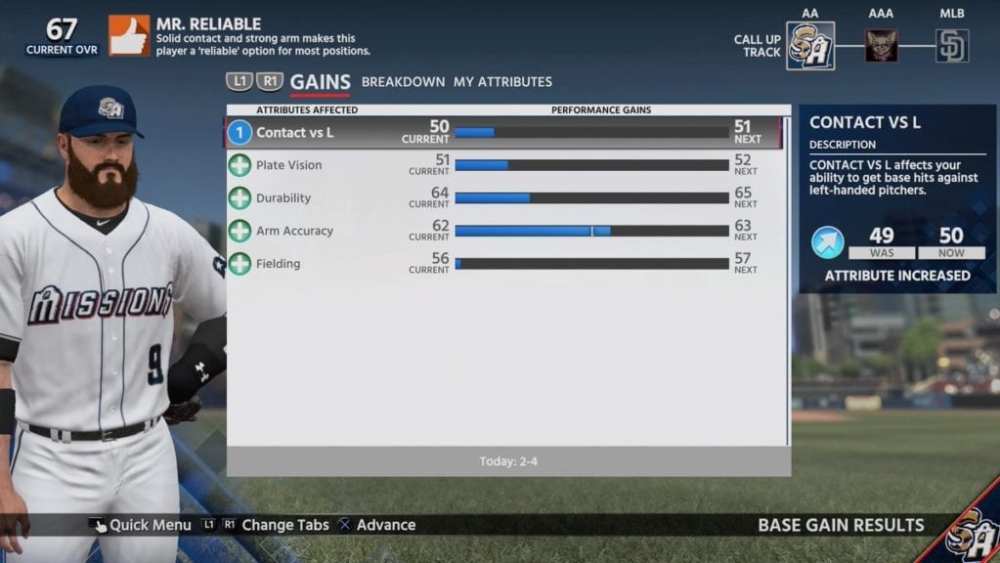
Each archetype has different positives and negatives since this year players can’t be bumped to 99 in every category. The explanation of each archetype is well done as the game provides an example for each using a player comparison from the past and the present day. For example, playing shortstop and choosing the Ball Hawk archetype, which values speed and defense, shows that the closest players to that are Kenny Lofton and Dee Gordon. This type of customization is really fun and adds an RPG class-like element to the game.
After getting drafted, I went straight to Double-A to get started in my career. Here I noticed that the new user interface for RttS is much more appealing. Most everything you need to be aware of is taken care of on the home screen, and it makes for a much cleaner look. The new call-up tracker in the upper right hand corner is a nice touch as well. New background screens include your player being on a bus or plane while on road trips, and this year your player has street clothes he wears instead of always being in uniform.
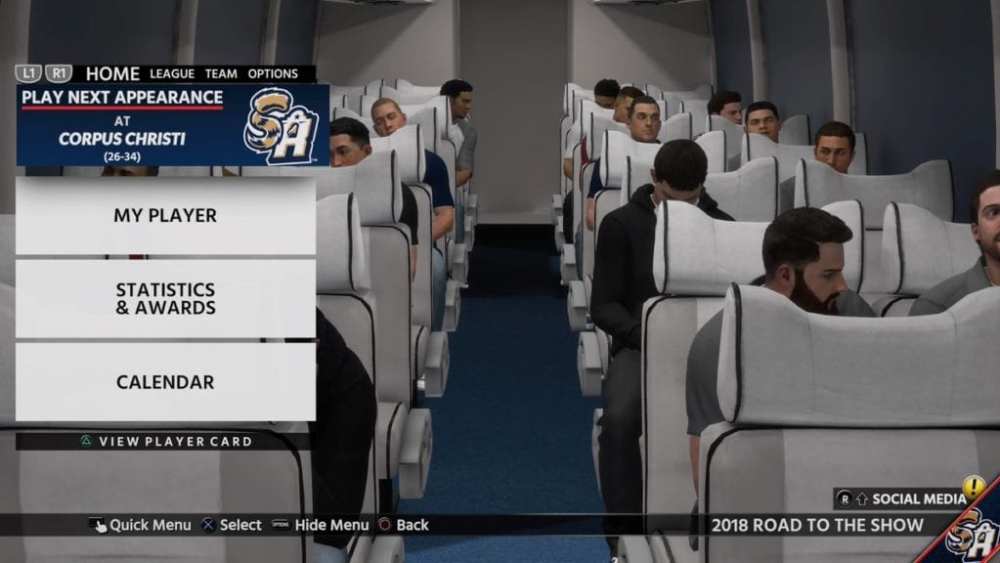
On the field, the new defensive camera is well met. It is much easier to keep track of balls headed your way, though the camera still pans too much for my liking when playing as an outfielder. There are times when my back is to home plate and the camera is panned over my player’s head, thereby limiting the visibility of any runners that may be on base. When playing the infield, the camera slows on contact with the ball giving users a better chance to react to where the ball is hit.
In the batter’s box, changes to how the PCI and hitting engine help improve the hit variety, and ability to put the ball where you want to. Broken bats and line drives back at the pitcher have been toned down, as have dribbling the ball at the plate for infield singles. Power swings and contact swings are now more important to choose between depending on the situation. Swing animations have been improved and being able to create your own stance has made me feel more involved in the mode.
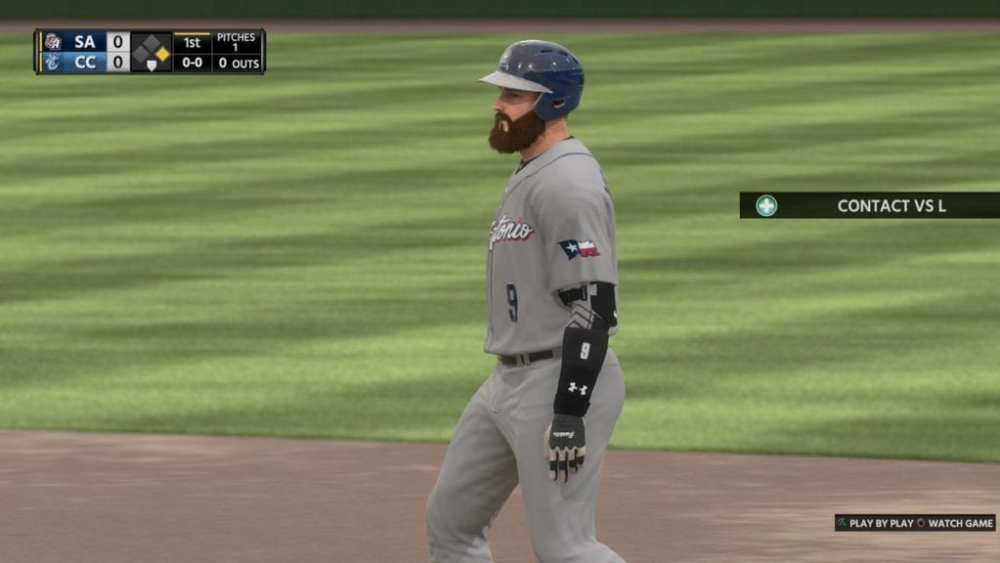
The on-field improvements all help tie in to the brand new progression system. Gone are microtransactions and the ability to essentially give your player virtual PEDs. Now progression is tied to how you play on the field. Swinging at balls out of the zone will lower plate discipline, while fouling off pitches in the zone increases plate vision. Most of these new progression systems make sense but some refining could be used. Specifically, my player hit a line drive to the outfield so the runner ahead of me held up between first and second waiting for it to drop. When the ball did drop, the center fielder was able to get the force out, and as a result, I got a negative contact against lefties. Also frustrating is reacting properly and making a defensive play, only for the game to decide I would throw the ball past my teammate and take a hit to my throw accuracy. These moments are few and far between, but can be irritating when they do happen.
Each rating has a cap that can be increased through the new training screens. Instead of having to either use stubs or play through a training drill, each training session is done automatically from a menu. There are options to increase attributes or increasing the maximum cap for each category. This is pretty cool as it helps to streamline the process instead of having to slog through a good at bat or defensive drill for the millionth time in a season. Another way to increase your attributes is through equipment. Each piece provides stat boosts that can actually increase your attributes over their max cap. This makes gathering equipment much more important than in the past.
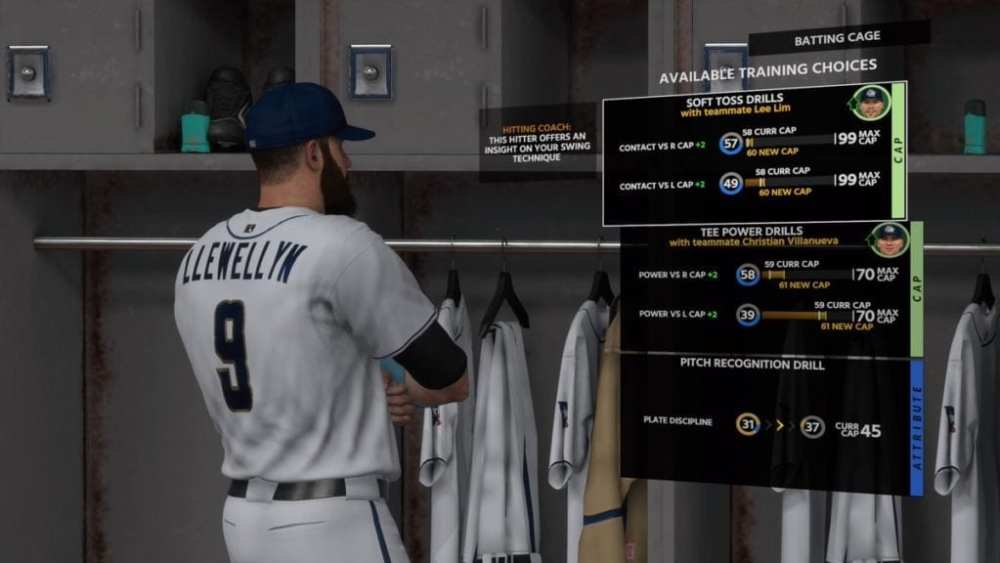
One of the other welcome changes from this progression system is it now takes much more time to make it to the big leagues. I didn’t make it in my RttS until year three, despite making the minor league All-Star game in both year one and two. Once I got to the majors, a May slump got me optioned back down to Triple-A. In this way, the progressions system is much more organic and realistic.
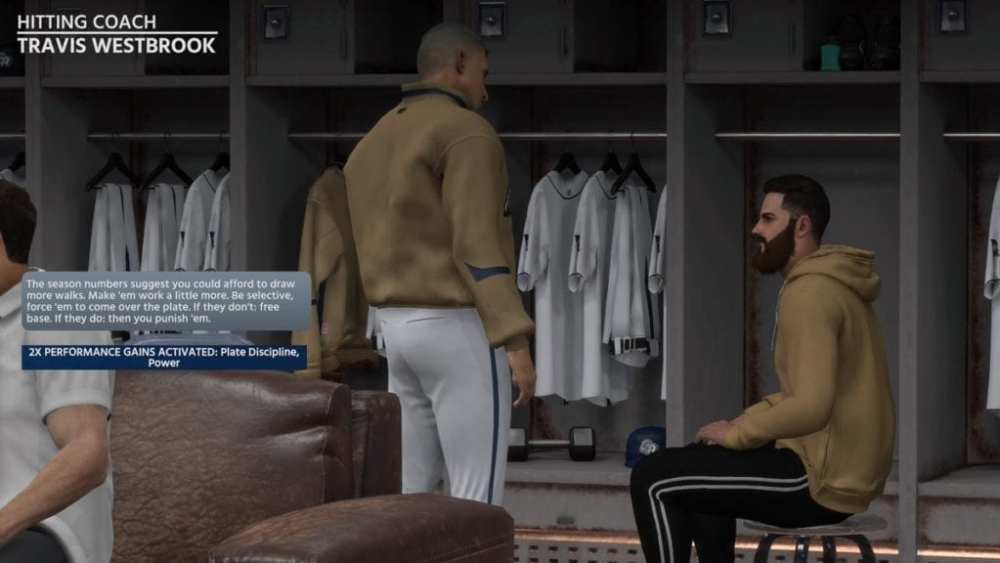
Beyond the aforementioned changes, Road to the Show is essentially the same in MLB The Show 18 as it was last year. That’s not to say that it is a bad thing, but I would’ve liked to see the narrated story moments change far more than they have. Your player is supposed to be a middling prospect yet there really isn’t much reference to that in the story. Even commentators will rave about how much potential you have when you hit a home run. It isn’t a deal breaker but is probably my biggest knock against the mode. There have also been a few glitchy moments during my experience. One has occurred when my player was tasked with guarding against a drag bunt but then suddenly warped back to his original positioning when the pitcher came set. Another one I’ve seen is where my feet sink into the ground in the batter’s box after creating a custom stance. Hopefully these issues can be patched out at some point.
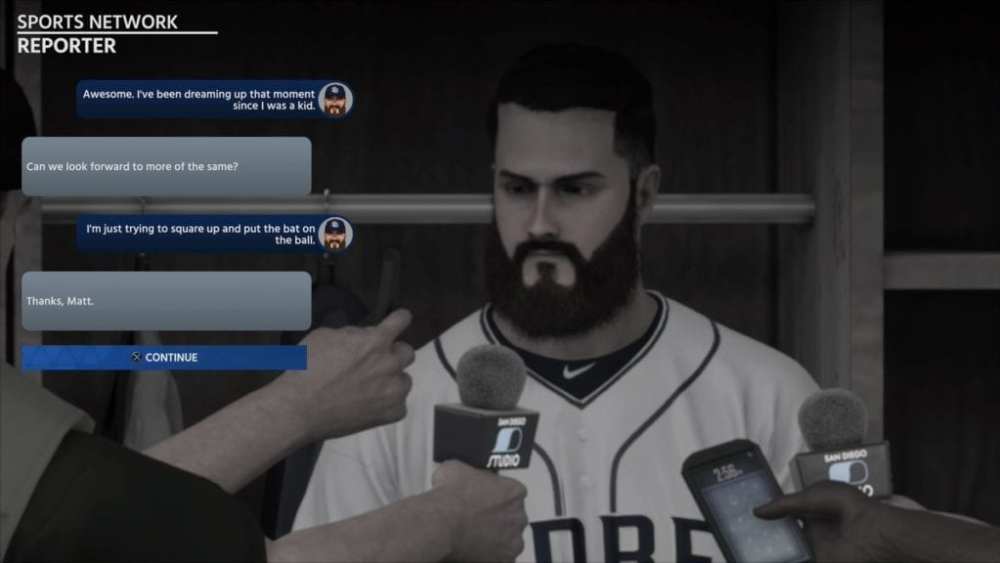
Final Analysis
Despite the beat-for-beat narration, questionable progression losses, and some weird glitches, Road to the Show remains my favorite part of MLB The Show 18. The new progression system overall is a revelation and made me feel more invested in my actual on-field performance. The new fielding camera and first step slowdown made me not turn off defensive opportunities for the first time in years, and made defense more fun. It took me over two seasons to reach the majors and even longer to stick as an everyday player, but the grind was made so much more fun because I actually felt like my play mattered instead of my stub count. Once again, Road to the Show has hooked me and is still the best career mode in sports games.








Published: Mar 30, 2018 06:28 pm